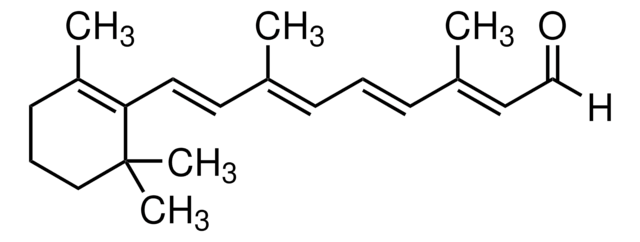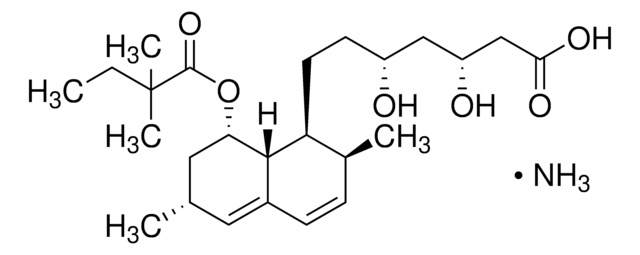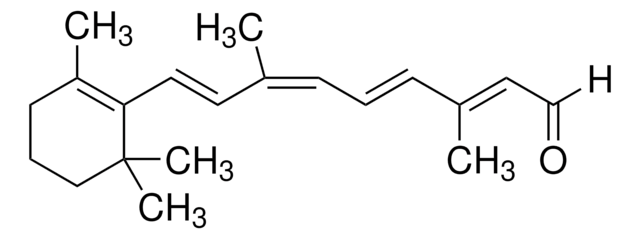R3255
13-cis-Retinoic acid
≥98% (HPLC)
Synonym(s):
Isotretinoin
About This Item
Recommended Products
Assay
≥98% (HPLC)
form
powder
technique(s)
HPLC: suitable
color
yellow to yellow-orange
mp
172-175 °C (lit.)
storage temp.
−20°C
SMILES string
[H]\C(C(O)=O)=C(C)\C=C\C=C(C)\C=C\C1=C(C)CCCC1(C)C
InChI
1S/C20H28O2/c1-15(8-6-9-16(2)14-19(21)22)11-12-18-17(3)10-7-13-20(18,4)5/h6,8-9,11-12,14H,7,10,13H2,1-5H3,(H,21,22)/b9-6+,12-11+,15-8+,16-14-
InChI key
SHGAZHPCJJPHSC-XFYACQKRSA-N
Gene Information
human ... NOS2(4843) , RARA(5914) , RARB(5915) , RARG(5916)
Looking for similar products? Visit Product Comparison Guide
Related Categories
Application
- as a component of fresh media for LA-N-5 differentiation
- to treat medulloblastoma cells for cell differentiation
- to treat spheroids for generating time-lapse videos
- to examine its head- deforming activity under light and dark conditions in Xenopus laevis
Biochem/physiol Actions
Features and Benefits
Signal Word
Danger
Hazard Statements
Precautionary Statements
Hazard Classifications
Eye Irrit. 2 - Repr. 1B - Skin Irrit. 2 - STOT SE 3
Target Organs
Respiratory system
Storage Class Code
6.1C - Combustible acute toxic Cat.3 / toxic compounds or compounds which causing chronic effects
WGK
WGK 3
Flash Point(F)
Not applicable
Flash Point(C)
Not applicable
Personal Protective Equipment
Certificates of Analysis (COA)
Search for Certificates of Analysis (COA) by entering the products Lot/Batch Number. Lot and Batch Numbers can be found on a product’s label following the words ‘Lot’ or ‘Batch’.
Already Own This Product?
Find documentation for the products that you have recently purchased in the Document Library.
Customers Also Viewed
Articles
All-trans retinoic acid (RA, ATRA) is a pleiotropic activation factor that regulates genes associated with normal vertebrate cellular processes such as cell differentiation, cell proliferation, apoptosis, and embryonic development.
We offer a variety of small molecule research tools, such as transcription factor modulators, inhibitors of chromatin modifying enzymes, and agonists/antagonists for target identification and validation in gene regulation research; a selection of these research tools is shown below.
Our team of scientists has experience in all areas of research including Life Science, Material Science, Chemical Synthesis, Chromatography, Analytical and many others.
Contact Technical Service












